#plant witch
Text




#moodboard#aesthetic#icons#pinterest#indie#cozy#naturecore#cottagecore#cottage aesthetic#mother nature#nature#cottage style#cottage garden#cottage#cottage vibes#cozy cottage#cottage witch#plant witch#plants#flower garden#flowers#flowercore
10K notes
·
View notes
Text

Plant witch! in watercolor
6K notes
·
View notes
Text
Herbalism book reccomendations 📚🌿
General herbalism:
The Herbal Medicine-Maker's Handbook by Green J. (2011)
20,000 Secrets of Tea: The Most Effective Ways to Benefit from Nature's Healing Herbs by Zak V. (1999)
The Modern Herbal Dispensatory: A Medicine-Making Guid by Easly T. (2016)
A-Z Guide to Drug-Herb-Vitamin Interactions by Gaby A.R.
American Herbal Products Association's Botanical Safety Handbook (2013)
Medical Herbalism: The Science and Practice of Herbal Medicine by Hoffman D. (2003)
Herbal Medicine for Beginners: Your Guide to Healing Common Ailments with 35 Medicinal Herbs by Swift K & Midura R (2018)
Today's Herbal Health: The Essential Reference Guide by Tenney L. (1983)
Today's Herbal Health for Women: The Modern Woman's Natural Health Guide by Tenney L (1996)
Today's Herbal Health for Children: A Comprehensive Guide to Understanding Nutrition and Herbal Medicine for Children by Tenney L. (1996)
For my black folks!!!
African Medicine: A Complete Guide to Yoruba Healing Science and African Herbal Remedies by Sawandi T.M. (2017)
Handbook of African Medicinal Plants by Iwu M.M. (1993)
Working The Roots: Over 400 Years of Traditional African American Healing by Lee M.E. (2017)
Hoodoo Medicine: Gullah Herbal Remedies by Mitchell F. (2011)
African American Slave Medicine: Herbal and non-Herbal Treatments by Covey H.C. (2008)
The Art & Practice of Spiritual Herbalism: Transform, Heal, and Remember with the Power of Plants and Ancestral Medicine by Rose K.M. (2022)
Indigenous authors & perspectives!!
Braiding Sweetgrass: Indigenous Wisdom, Scientific Knowledge and the Teachings of Plants by Kimmerer R.W. (2015)
Gathering moss by Kimmerer R.W. (2003)
The Plants Have So Much To Give All We Have To Do Is Ask by Siisip Geniusz M. (2005)
Our Knowledge Is Not Primitive: Decolonizing Botanical Anishinaabe Teachings by Djinn Geniusz W. (2009)
Ancient Pathways, Ancestral Knowledge: ethnobotany and ecological wisdom of indigenous peoples of northwestern North America by Turner N. (2014)
A Taste of Heritage: Crow Indian Recipes and Herbal Medicines by Hogan Snell A. (2006)
Medicines to Help Us by Belcourt C. (2007)
After the First Full Moon in April: A Sourcebook of Herbal Medicine from a California Indian Elder by Grant Peters J. (2010)
Latin american herbalism works!!
Earth Medicines: Ancestral Wisdom, Healing Recipes, and Wellness Rituals from a Curandera by Cocotzin Ruiz F. (2021)
Hierbas y plantas curativas by Chiti J.F. (2015)
Del cuerpo a las raíces by San Martín P.P., Cheuquelaf I. & Cerpa C. (2011)
Manual introductorio a la Ginecología Natural by San Martín P.P.
🌿This is what I have for now but I’ll update the post as I find and read new works, so keep coming if you wanna check for updates. Thank you for reading 🌿
#herbalism#herbal medicine#herbal health#green witch#green witchcraft#green magic#herbal magic#herbal witch#herbal witchcraft#plant medicine#plant magic#plant witch#folk healer#healing witch#healing magic#curanderismo#yerbera#curandera#rootwork#rootworker
2K notes
·
View notes
Text
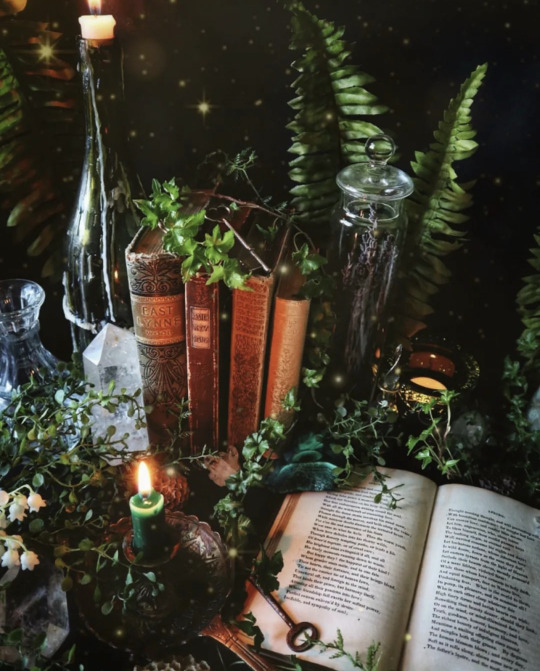
Arctimalchemy
#green magick#green wicca#green witch#plant witch#plant witchery#quartz crystal#candle magick#witchblr#witches of tumblr#witchcraft#wicca#pagan#witchy things#witchy#magick#baby witch#green witchcraft#witch community
4K notes
·
View notes
Text
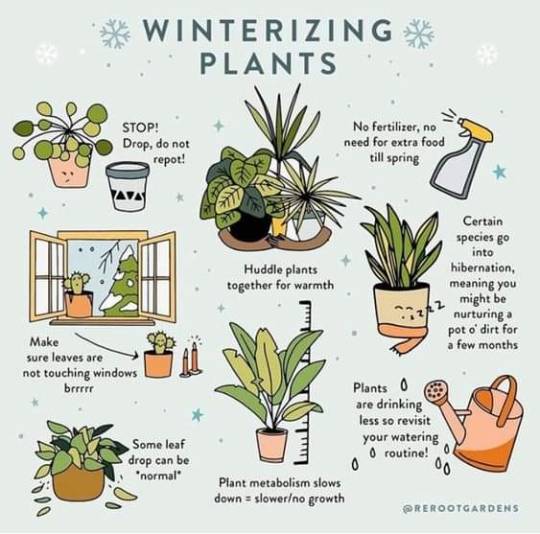
🌲🌿🪴🌻🪷🍂🌳
#plant witch#plantcore#plantblr#plants#plant care#witchy vibes#nature#green witch#witchythings#witchblr#baby witch tips#witch community#witch blog#beginner witch#witch aesthetic#forest witch#green witchcraft#nature witch#witches of tumblr#witch tips#witchy stuff
293 notes
·
View notes
Text
On animism
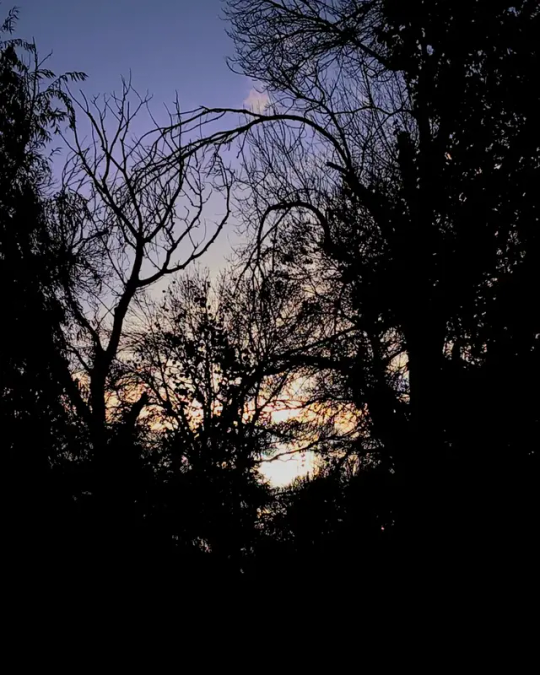
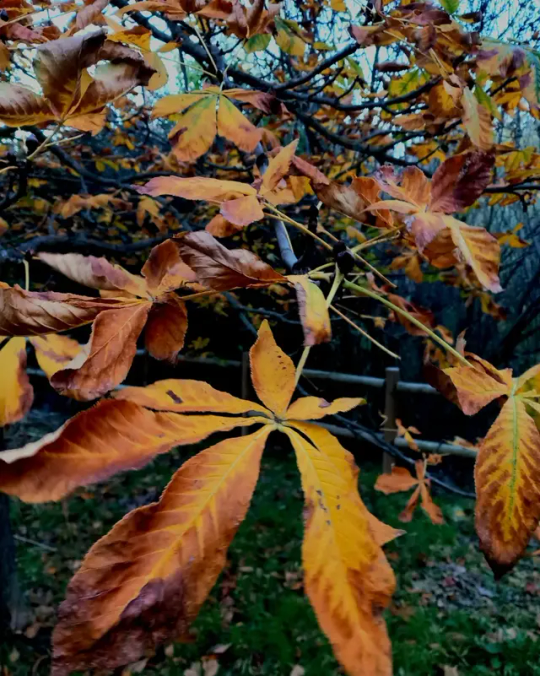
One of my teachers at university told us something today, that I believe to be relevant to animism and therefore also witchcraft:
He explained that in the West we see everything as occurences, whereas in some languages the same happenings are described as actions. Meaning that in the West we tend to imply that there is no agency involved in whatever happens, while some other languages tend to imply that someone activily causes things. His example was that in the West rain is understood as something that just happens, no one causes the rain. Whereas in Mesoamerica it was believed that it rained because some god was crying.
While the idea of a literal crying god causing it to rain on earth might be outdated, I find it really interesting how these two perspectives - events vs. actions - might shape our relationship with the world. If rain is not just an occurence, but someone acting with agency, rain becomes another part of the community we live in. The community then doesn't only consist of humans anymore, but of everything that surrounds us. Suddenly there are all these new players that actively affect your life with their actions. Other-than-human persons that you can interact with and with whom you have to keep a friendly relationship. If the tree in front of your house isn't just an object, but a being with agency, you actually have to be at least respectful and might even want to build a relationship with them, get to know them, learn from them.
I think that's really the core of animism. Descriptions of animism are often reduced to the believe that everything has a soul, but I think believe doesn't even factor into it. You don't need to believe that there is a non-physical aspect to rain, mountains, stones. It's about how we interact with them. I don't even have to ask myself the question if the tree in front of my house has a soul in order to learn about and from them or to interact with them. In my opinion animism is something that is done, not thought or believed. It's a perspective.
Listening to my teacher also reminded me of the following part of Braiding Sweetgrass (great book btw) which explains all this really well:
A bay is a noun only if water is dead. When bay is a noun, it is defined by humans, trapped between its shores and contained by the word. But the verb wiikwegamaa - to be a bay - releases the water from bondage and lets it live. "To be a bay" holds the wonder that, for this moment, the living water has decided to shelter itself between these shores, conversing with cedar roots and a flock of baby mergansers. Because it could do otherwise become a stream or an ocean or a waterfall, and there are verbs for that, too. To be a hill, to be a sandy beach, to be a Saturday, all are possible verbs in a world where everything is alive. Water, land, and even a day, the language a mirror for seeing the animacy of the world, the life that pulses through all things, through pines and nuthatches and mushrooms. This is the lan- guage I hear in the woods; this is the language that lets us speak of what wells up all around us.
[...]
This is the grammar of animacy. [...] In English, we never refer to a member of our family, or indeed to any person, as it. That would be a profound act of disrespect. It robs a person of selfhood and kinship, reducing a person to a mere thing. So it is that in Potawatomi and most other indigenous languages, we use the same words to address the living world as we use for our family. Because they are our family.
To whom does our language extend the grammar of animacy? Naturally, plants and animals are animate, but as I learn, I am discovering that the Potawatomi understanding of what it means to be animate diverges from the list of attributes of living beings we all learned in Biology 101. In Potawatomi 101, rocks are animate, as are mountains and water and fire and places. Beings that are imbued with spirit, our sacred medicines, our songs, drums, and even stories, are all animate. The list of the inanimate seems to be smaller, filled with objects that are made by people.
[...]
The language reminds us, in every sentence, of our kinship with all of the animate world.
- Robin Wall Kimmerer, Braiding Sweetgrass: Indigenous Wisdom, Scientific Knowledge and the Teachings of Plants (2013), p. 78-80.
#animism#witchcore#witch blog#witchcraft#witch books#braiding sweetgrass#witchy#folk witchcraft#folk magic#plant witch#bookblr#bookish#booklr#studyblr#animist
295 notes
·
View notes
Text

🍂Other Leaves To Burn In Lieu of Bay Leaves And Their Properties
Source | https://www.instagram.com/mariathearcane/
Which is your favorite?
Elder - New Beginnings
American Elm - Love
Sassafras - Health
Maple - Longevity
Ash - Strength
Birch - Prosperity
#plant magick#plant witch#green witch#witch#witchcraft#witchblr#witchy#magick#witchcore#witches#spells#witches of tumblr#spellwork#witchy decor#pagan#pagan witch#hedgewitch#altar decor#witchy aesthetic
965 notes
·
View notes
Text
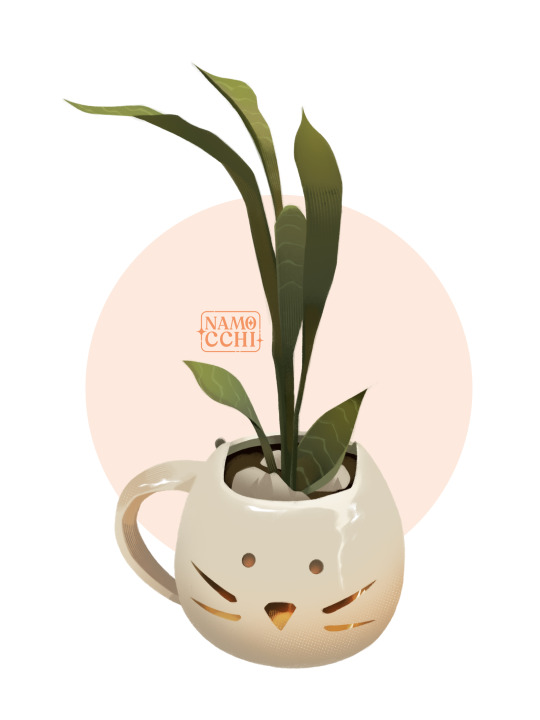
Day 2 of painting my mom's favorite mini plants in her garden !
#art#illustration#artists on tumblr#digital art#cute#digital illustration#drawing#painting#artwork#plant witch#plants#plantas#garden#flowers#foliage#plantblr
64 notes
·
View notes
Text
This was so rushed but I wanted to animate Hunter after that one face danny makes in cats dont dance. I dont even know 😂
#the owl house fanart#huntlow#for the future#toh belos#toh humor#the owl post#hunter noceda#willow park#the golden guard#what a woman#brain rot#hunter and willow#fuck belos#plant witch#thanks to them#the owl house season three spoilers#the owl house season 3#cats dont dance
495 notes
·
View notes
Text
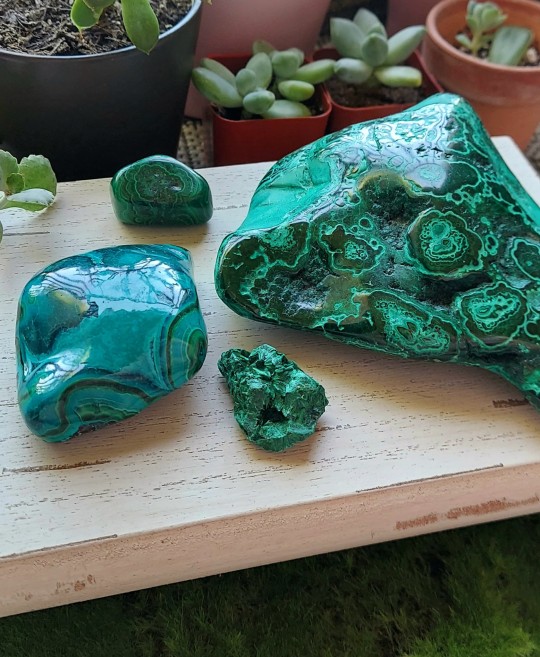
• MALACHITE •
#crystals#healing crystals#crystal healing#witchy#malachite#chrysocolla#minerals#crystal witch#plant witch
554 notes
·
View notes
Text



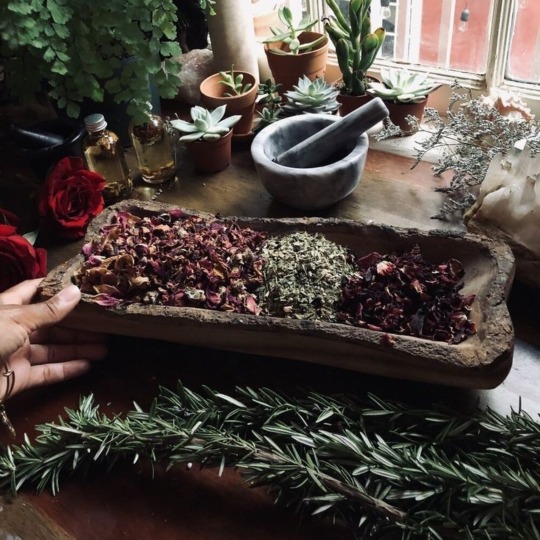
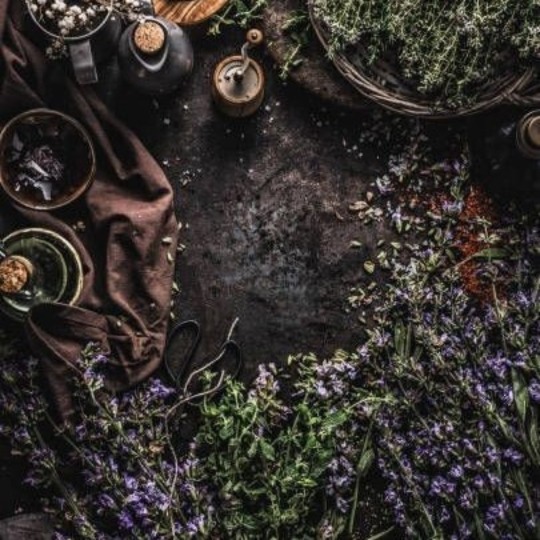

#moodboard#aesthetic#icons#pinterest#naturecore#witchy#witch#witches#witchcraft#witchblr#witchcore#witch community#witches of tumblr#pagan wicca#pagan witch#paganism#plant witch#pagan#paganblr#herbs#herb witch
1K notes
·
View notes
Text

Framed Lily of the Valley, handmade by yours truly.
#soliloquyjewelry#soliloquy jewelry#lily of the valley#poisonous plants#green velvet#victorian#victorian style#victorian inspired#witch decor#cottage witch#goblincore#witchcore#herb witch#plant witch
839 notes
·
View notes
Text

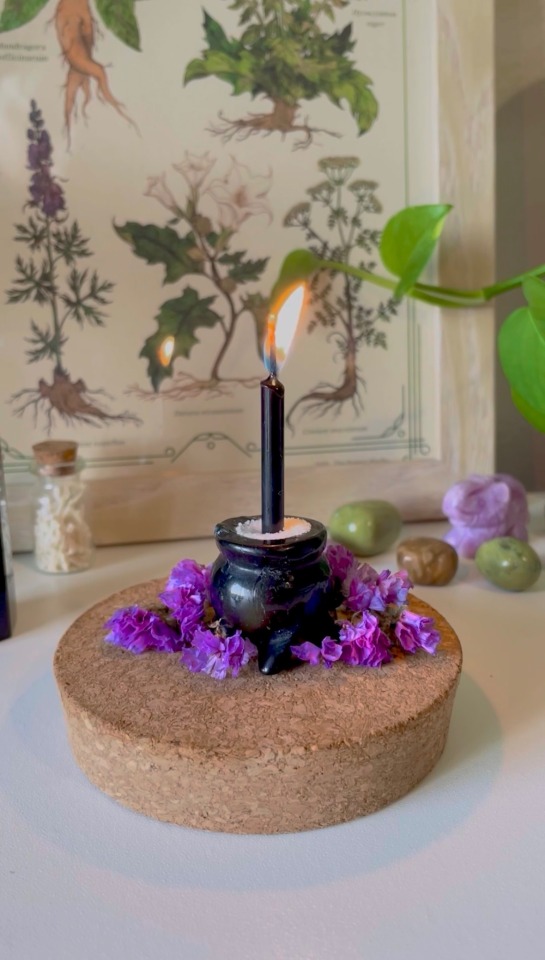
reminder that you can use birthday candles for little spells!🌱♡
#such a cute simple and quick option#plus some birthday candles are so cute#mine#delphisorceress#witchblr#witches of tumblr#earth witch#witch aesthetic#birthday candles#candle spells#candle magick#plant witch#spellwork#spellcraft
89 notes
·
View notes
Text
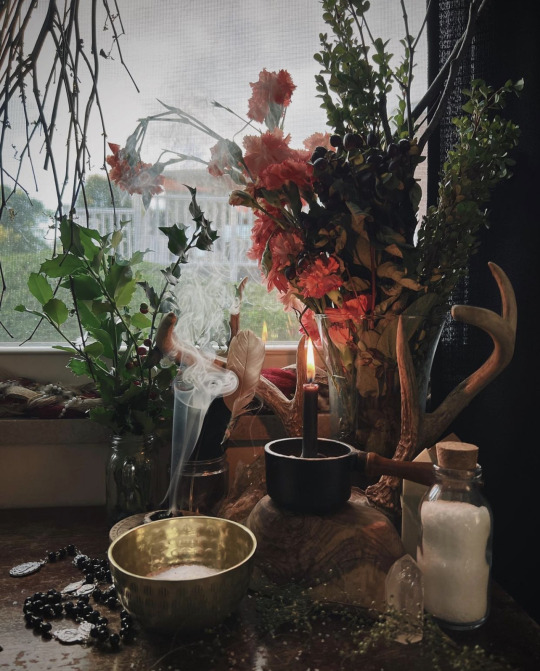
Gritchenwitch
#witchblr#witches of tumblr#witchcraft#wicca#pagan#witchy things#witchy#magick#green witch#baby witch#green witchcraft#witch aesthetic#witch community#wiccan#crystal witch#plant witch#plant witchery#witchyvibes#witches of instagram
2K notes
·
View notes
Text
🌿How to harvest & dry herbs🌿

⚠️This is just my personal approach based on research, mentors and my own experience, please do your own research too ⚠️
Some general guidelines:
These are all recommended for both uses, magical and medicinal, but particularly for plant material you’ll want to give medicinal use.
Always harvest ~10 meters away from contamination sources (roads and cars, railroads, constructions, factories, etc. Even more serious stuff like landfills and heavy metals) Plants can absorb toxic chemical compounds from any these sources, so if you plan to ingest them or apply on your skin etc, avoid contamination sources. Examine your area to find where it’s safest to harvest plant material from.
Only take up to 30% of plant material, preferably less (leaves, flowers, berries, roots) this is to allow for healthy regrow.
Don’t take material with visible harm, illness or bugs, such as yellowed or bug bitten / holey leaves, etc. Educate yourself to recognize different possible bugs or parasites or plant illnesses that may affect your local flora to avoid these.
Sometimes you’ll have better results with fresh materials, you don’t always need to dry them. Know when to use what, depending on your goal and what compounds you want to extract, and how it’s best to extract them.
If you prefer fresh, you can keep fresh herbs in a vase with water for up to a week, more or less.
Clean the branches & leaves by soaking them or washing them in saltwater to scare away little critters, and dry them stem-up, making small bundles with stems fairly separated so everything is well aireated, and always away from sunlight. Do not clean with alcohol, detergent, or any other substances. Just water or salty water will do.
Roots, flowers, berries and bark can be dried in drying racks or basquets. Separate them from each other, specially flower petals, to dry them thoroughly and keep in a dark place until they’re fully dried (you’ll know if they crack when handling them and don’t feel soft anywhere anymore). For roots, bark and berries, move and rotate every so often to make sure they dry evenly, or just dry them in the oven if you’re brave! (be careful not to burn them)
Aromatic herbs should be harvested before they bloom, when you see the fully formed buds and their smell (and taste!) is strongest.
When cutting the stems, cut at an angle to allow for healthy regrow.
Always make sure you’re harvesting what you think you’re harvesting. Learn to identify plant species properly, and always, always research about lookalikes it may have, as they could be toxic or poisonous or harmful in some way. This is necessary for safety reasons.
Store everything in glass jars or paper bags, away from humidity, to prevent mold. I don’t recommend plastic bags or containers as they can more easily retain humidity but that’s me. Check on your stuff often too!! Different things will last more or less time on the shelf.
⚠️Extra reminder to always check which part of the plant is medicinal, check if any other parts could be toxic or harmful, check for dosages, contraindications, possible allergies, and possible interactions with anything else you’re taking!!!!!!!!
For specific plant parts:
Flowers: Harvest as soon as they’ve fully bloomed, during the full moon.
Berries and fruits: Harvest right after the first frost, generally in autumn. Look for deep color and tight, glowy skin. I like to harvest these under a waning moon.
Seeds and pods: Collect these when all flowers are gone, usually in late summer, under a waning moon.
Leaves: Ideally, collect these from bright green and flexible limbs, the first warm days of spring when there’s new sap and no flowers yet, but for many species you can take some leaves all year round. Under a waxing or full moon does it for me.
Bark: Harvest during the first warm days of spring, when the sap rises. You’ll find newly formed bark easier to peel off. Rather than peeling the trunk directly, cut off a branch or limb and peel it off completely, it’ll cause less harm to the tree or bush. Under a waxing moon it is.
Roots, rhizomes, tubers: Harvest after all the leaves are gone, around late autumn, but before all the good stuff stored in them is used during the winter. Under a waning or new moon.
Some superstitions:
These are more specifically for the magical properties of the plant.
Some folks say you shouldn’t harvest plant material with iron scissors or other iron tools, as iron scares away the spirit of the plant, and thus, the potency of whatever your working on will be less.
For some plants, you’ll find specific prayers, chants or charms, more or less complicated rituals, to harvest specific parts at specific dates. This is, again, for the spiritual properties rather than medicinal. I am the type to believe proper harvest makes both the work and the medicine stronger, but it’s up to you to decide how to go about harvesting certain plants considered “sacred”, and even what plants are considered “sacred” will also change depending on your own practice, culture, tradition, region and more, so do your research!
It’s common belief to not speak while you’re going to harvest the herb, and neither when coming back, as to not alert the spirit your intentions and out of respect for what it gave you or what it’s doing for you.
But while you’re there, after harvesting, let the plant spirit know why you’re in need of it’s aid and leave some kind of offering in return (again, do your own research on specific plants and their folklore, but some general things such as water, sugar or eggshells, and more traditional things like a certain number of coins, will likely work just fine)
With some plant species, particularly the poisonous kind, or some associated with the devil in folklore, you’ll likely find ways to protect yourself from the spirit’s anger upon being unearthed or cut. These range from giving praise to the spirit in the form of poems, songs, or offerings before getting to harvesting, to drawing circles in the dirt around it with holy water, a knife, or your own hand, and may even be having to cut the branches or unearth the plant in a specific manner (some say backwards, some say away from you) to prevent it from harming you. Sometimes simply carrying protective charms will do. Learn the folklore of each species you work with!
#herbalism#green witch#green magic#green witchcraft#rootwork#black herbalists#black herbalist#witches of color#brujería#brujeria#bruja verde#curanderismo#curandera#plant witch#plant witchcraft#cottagecore#cottage witch#forest witch#grandmacore#farmcore#faeriecore#goblincore
588 notes
·
View notes
Text

The room is getting there! Needs more plants 🌿🔮
#witchcraft#witchy things#hedgewitch#green witch#eclectic witch#pagan witch#witchy vibes#witchy decorations#altardecor#witchy room#witchery#witchcore#green aesthetic#plant witch#plant magic#room decor
67 notes
·
View notes